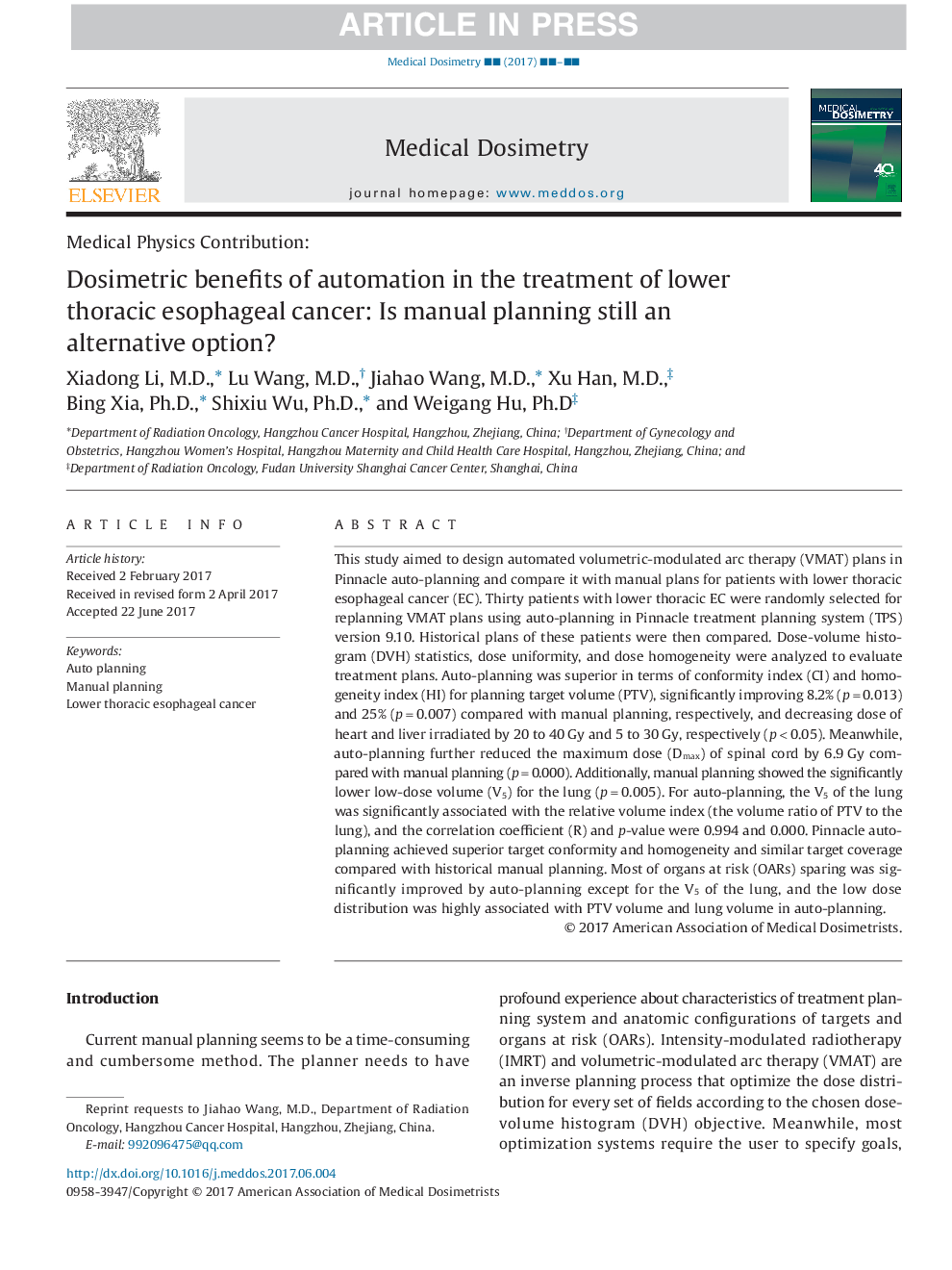| Article ID | Journal | Published Year | Pages | File Type |
|---|---|---|---|---|
| 8248310 | Medical Dosimetry | 2017 | 7 Pages |
Abstract
This study aimed to design automated volumetric-modulated arc therapy (VMAT) plans in Pinnacle auto-planning and compare it with manual plans for patients with lower thoracic esophageal cancer (EC). Thirty patients with lower thoracic EC were randomly selected for replanning VMAT plans using auto-planning in Pinnacle treatment planning system (TPS) version 9.10. Historical plans of these patients were then compared. Dose-volume histogram (DVH) statistics, dose uniformity, and dose homogeneity were analyzed to evaluate treatment plans. Auto-planning was superior in terms of conformity index (CI) and homogeneity index (HI) for planning target volume (PTV), significantly improving 8.2% (pâ=â0.013) and 25% (pâ=â0.007) compared with manual planning, respectively, and decreasing dose of heart and liver irradiated by 20 to 40âGy and 5 to 30âGy, respectively (pâ<â0.05). Meanwhile, auto-planning further reduced the maximum dose (Dmax) of spinal cord by 6.9âGy compared with manual planning (pâ=â0.000). Additionally, manual planning showed the significantly lower low-dose volume (V5) for the lung (pâ=â0.005). For auto-planning, the V5 of the lung was significantly associated with the relative volume index (the volume ratio of PTV to the lung), and the correlation coefficient (R) and p-value were 0.994 and 0.000. Pinnacle auto-planning achieved superior target conformity and homogeneity and similar target coverage compared with historical manual planning. Most of organs at risk (OARs) sparing was significantly improved by auto-planning except for the V5 of the lung, and the low dose distribution was highly associated with PTV volume and lung volume in auto-planning.
Related Topics
Physical Sciences and Engineering
Physics and Astronomy
Radiation
Authors
Xiadong M.D., Lu M.D., Jiahao M.D., Xu M.D., Bing Ph.D., Shixiu Ph.D., Weigang Ph.D,
